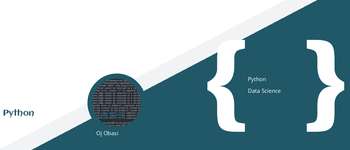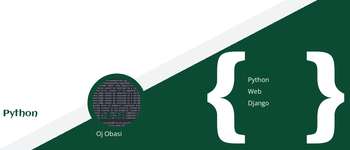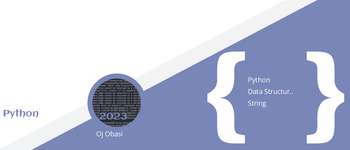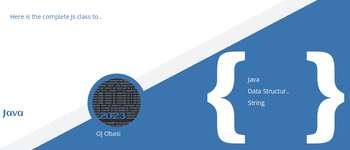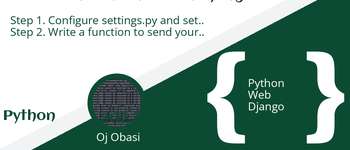Java Programming College Quiz 1 Questions
Question 1
Which of the following keywords is useful for skipping to the next iteration of a loop?
Select one:
- a. while
- b. break
- **c. continue **
- d. do
- e. switch
The correct answer is: continue
Question 2
Consider the following block of Java code. How many times will it output "Hello"?
1 2 3 4 | |
Select one:
- a. 0
- b. 9
- c. 1
- d. 10
- **e. Way too many! **
Notice the update, "i--". "i" starts less than 10 and just keeps getting smaller. (The loop is technically not infinite. "i" will eventually reach the most-nega tive value that "int" can represent, and then it wil l wrap around to the largest possible "int", ending the loop.) The correct answers are: 1, Way too many!
Question 3
Consider the following class definition. Which variables can be used in the mi ssing "println" expression on line 20 ?
1 2 3 4 5 6 7 8 9 10 11 12 13 14 15 16 17 18 19 20 21 | |
Select one:
- a. Only "j"
- b. Only "i"
- c. "i" and "j"
- d. "j" and "k"
- e. Only "k"
"i" and "k" are no longer in scope. Only "j" is stil l in scope. The correct answer is: Only "j"
Question 4
Which of the following types is NOT a primitive type?
Select one:
- a. short
- b. boolean
- **c. String **
- d. char
- e. double
The correct answer is: String
Question 5
Consider the following Java program:
1 2 3 4 5 6 | |
What starts on line 4? Select one:
- a. a comment
- b. a method (subroutine) definition
- c. a class definition
- d. a statement
- e. a variable declaration
The correct answers are: a statement, a class definition
Question 6 Incorrect
Consider the following line of Java code.
System.out.println("Hello, World!");
"Hello ,World" is which of the following?
Select one:
a. a class b. a method (subroutine) c. an object d. a parameter e. a statement
'"Hello, World!"' is a parameter passed to the meth od "println". The correct answer is: a parameter
Question 7
In a for loop, how many times does the continuation condition run?
Select one:
- a. Exactly once.
- b. At least once, at the end of each iteration.
- c. Zero or more times, at the beginning of each iteration.
- d. At least once, at the beginning of each iteration.
- e. Zero or more times, at the end of each iteration .
The correct answer is: At least once, at the beginning of each iteration.
Question 8
Which one of the following is used in Java programming to handle asynchronous events ?
Select one:
- a. protocols
- b. pragmatics
- c. reserved words
- d. short circuits
- **e. event handlers **
The correct answer is: event handlers
Question 9
Each of the individual tasks that a CPU is working on is called:
Select one:
- a. a message
- b. a program counter
- c. a thread
- d. an object
- e. an address
The correct answer is: a thread
Question 10
What is the output of the following Java program?
1 2 3 4 5 6 7 8 | |
Select one:
- a. 100
- b. 9
- c. 10
- d. 0
- e. 45
The "add" method increments the parameter "i", which is a copy of the argument "sum". The value of "sum" never changes. The correct answer is: 0
Question 11
Assume "test" is a boolean variable. Which of the following expressions is equival ent to "test == false"?
Select one:
a. test b. !test c. test.equals(true) d. test = true
The correct answer is: !test
Question 12
In a for loop, how many times does the update run?
Select one:
- a. At least once, at the end of each iteration.
- b. Zero or more times, at the end of each iteration .
- c. Zero or more times, at the beginning of each iteration.
- d. Exactly once.
- e. At least once, at the beginning of each iteration.
The correct answer is: Zero or more times, at the end of each iteration.
Question 13
Consider the following Java program:
1 2 3 4 5 6 | |
What is on line 3? Select one:
- a. a class definition
- b. a method (subroutine) definition
- c. a statement
- d. a variable declaration
- e. a comment
The correct answers are: a method (subroutine) definition , a class definition
Question 14
Consider the following Java program:
1 2 3 4 5 6 | |
What starts on line 1? Select one:
- a. a comment
- b. a class definition
- c. a variable declaration
- d. a statement
- e. a method (subroutine) definition
The correct answer is: a class definition
Question 15
Consider the following Java method, which term best describes "static"?
1 2 3 | |
Select one:
- a. actual parameter or argument
- b. method call
- c. formal parameter
- d. modifier
- e. return type
The correct answer is: modifier
Question 16
Which of the following can a class NOT be used for?
Select one:
- a. a container for static methods (subroutines)
- b. a container for static variables
- c. a primitive type
- d. a type for method parameters
- e. a type for variables
The correct answer is: a primitive type
Question 17
Which of the following keywords is useful for loops that should always execute at least once?
Select one:
- a. switch
- b. while
- c. continue
- d. break
- e. do
The correct answer is: do
Question 18
Which of the following is NOT an effective strategy when your program does not work?
Select one:
- a. Make random changes to code that you do not unders tand until it accidentally works.
- b. Add debugging statements to output information ab out the state of your program while it runs.
- c. Check each error message generated by the compiler or IDE.
- d. Use a debugger to pause your program while it is running so you can check its state.
- e. Read through your code and figure out what it does step by step.
The correct answer is: Make random changes to code that you do not understand until it accidentally works.
Question 19
Consider the following Java declaration and assignment statement.
float x = y;
Which one of the following types is "y" NOT allowed to be?
Select one:
a. double
b. long
c. int
d. short
e. float
Java automatically converts values from short, int, and long to float. It does not automatically convert double to float. The correct answer is: double
Question 20
What is output by the following Java program?
1 2 3 4 5 6 7 | |
Select one: a. 1 b. 42 c. 2 d. 0 e. 43
The inner call to "compute" has an argument, so it us es the second method definition, which returns 0+1, or 1. This 1 becomes the argument to the outer ca ll, which then returns 1+1, or 2. The first definition of "compute" is never used. The correct answer is: 2







